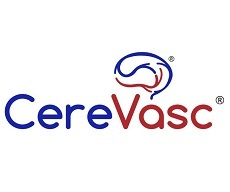 Cerevasc has announced that the 100th patient has received treatment for communicating hydrocephalus with the company’s eShunt system. These 100 patients have been enrolled in pilot studies and in the STRIDE clinical trial—a head-to-head comparison of the eShunt system versus the standard-of-care ventriculoperitoneal (VP) shunt in patients with normal-pressure hydrocephalus (NPH).
Cerevasc has announced that the 100th patient has received treatment for communicating hydrocephalus with the company’s eShunt system. These 100 patients have been enrolled in pilot studies and in the STRIDE clinical trial—a head-to-head comparison of the eShunt system versus the standard-of-care ventriculoperitoneal (VP) shunt in patients with normal-pressure hydrocephalus (NPH).
The 100th patient was treated by Pedro Lylyk (Clinica la Sagrada Familia, Buenos Aires, Argentina), who also treated the very first patient with the eShunt system.
“I am honoured to have performed the 100th procedure utilising the eShunt system for patients with communicating hydrocephalus,” said Lylyk, co-lead investigator of the STRIDE trial. “The minimally invasive procedure will help ensure more patients with hydrocephalus are eligible for treatment.”
The eShunt system is described by Cerevasc as the “first and only” endovascular shunt and the first new treatment option developed for communicating hydrocephalus since the VP shunt was introduced more than 60 years ago.
The results of the STRIDE trial will serve as the basis for Cerevasc’s anticipated submission to regulatory agencies for approval to market the eShunt system, as stated in a company press release.
“Reaching this milestone was made possible through the support of clinical investigators like Dr Lylyk who have demonstrated their commitment to driving innovation and improving patient care,” said Dan Levangie, chairman and chief executive officer (CEO) of Cerevasc. “We are incredibly fortunate to work with Dr Lylyk and his outstanding team in Buenos Aires, and are excited by the enthusiastic response of the medical community for the eShunt system. Enrolment in our STRIDE pivotal trial is off to a strong start and we look forward to completing this landmark clinical study.”









